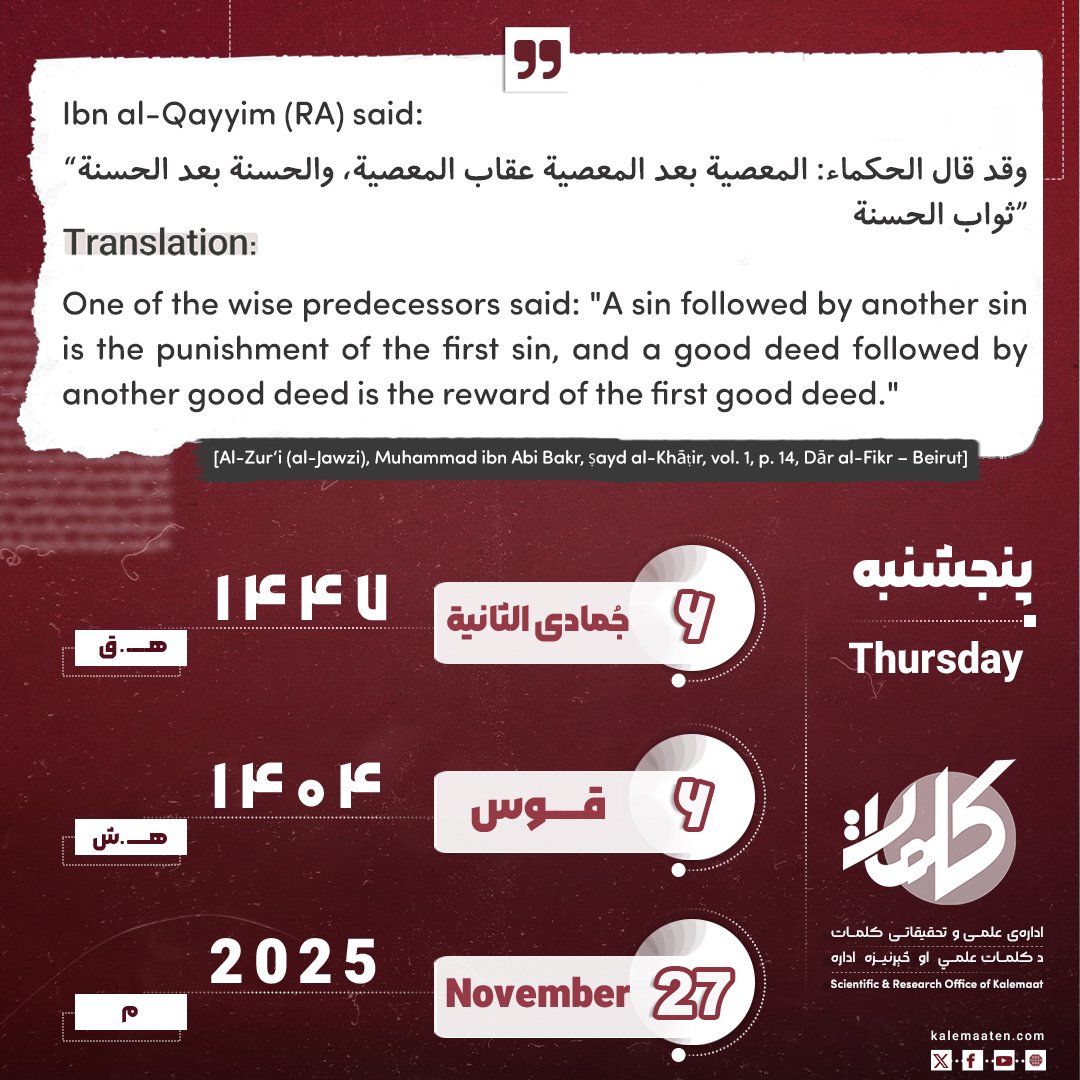
Author: Mufti Noor Mohammad Mohibi
The Quran; A Miracle Beyond Time-A Study of Its Miraculous Nature (Part 27)
The Mystery of the Barrier Between Seas in the Light of the Qur’an and Science
The Noble Qur’an, as a book of guidance, in addition to its spiritual direction, contains precise—and sometimes astonishing—references to natural phenomena, many of which modern science has only recently discovered or confirmed. Among these is the reference to a “barrier” between two bodies of water—one fresh and the other salty—mentioned in Surahs Al-Furqan and Ar-Rahman. These verses unveil a natural phenomenon that humans have observed for centuries, but have only scientifically explained in recent decades.
Qur’anic Verses and the Concept of the Barrier
In Surah Al-Furqan, it is stated: “وَهُوَ ٱلَّذِي مَرَجَ ٱلۡبَحۡرَيۡنِ هَٰذَا عَذۡبٞ فُرَاتٞ وَهَٰذَا مِلۡحٌ أُجَاجٞ وَجَعَلَ بَيۡنَهُمَا بَرۡزَخٗا وَحِجۡرٗا مَّحۡجُورٗا” Translation: “And it is He who has released [simultaneously] the two seas—one fresh and sweet and one salty and bitter—and He placed between them a barrier and an impassable boundary.”
And in Surah Ar-Rahman: “مَرَجَ ٱلۡبَحۡرَيۡنِ يَلۡتَقِيَانِ بَيۡنَهُمَا بَرۡزَخٞ لَّا يَبۡغِيَانِ” [Ar-Rahman: 19–20] Translation: “He released the two seas, meeting [side by side]; between them is a barrier [so] neither of them transgresses.”
In these verses, the Qur’an points to a phenomenon where, despite the apparent contact between two masses of water with differing characteristics, there exists a barrier that prevents their complete mixing.
Observational Evidence from Nature
Although this phenomenon has been visible in certain parts of the world for thousands of years, humanity has only examined it scientifically in recent centuries. Notable examples include:
-
Rivers of Bangladesh (Chandpur and Arakan): Here, two rivers—one with fresh water and the other with salty water—meet, yet at their junction, a visible boundary line separates them.
-
Attock Bridge, Pakistan: At this location, a river originating from Afghanistan’s mountains meets another river from Pakistan’s mountains at the “Attock Bridge.” From above the bridge, one can clearly see the boundary between the two waters—one darker and the other lighter.
-
The Meeting of the Amazon River and Rio Negro, Brazil: These two different water flows run side by side for kilometers without mixing, due to differences in temperature, density, flow speed, and salinity.
Scientific Explanation of the Barrier: Surface Tension and Physical Differences
The phenomenon referred to in the Qur’an as “barzakh” (barrier) is explained in physics through the concept of surface tension or fluid phase boundaries.
Surface tension refers to the force that holds the molecules at the surface of a liquid together, preventing it from easily mixing with another liquid, except under certain conditions. In the case of two bodies of water with different physical properties (such as fresh and salty), differences in temperature, density, salinity, vapor pressure, and other factors prevent them from instantly mixing. In other words, an invisible but strong natural barrier—like a barzakh—forms between them.
A simple example: If you fill a bowl with water, its surface may rise slightly above the rim before spilling. This is due to surface tension holding the water molecules together. If you gently place a small metal needle on the surface, it will remain afloat without sinking—demonstrating the strength of this surface layer.
In seas and rivers, the same force operates on a much larger scale, combined with other factors like temperature and density differences, to create the “barrier.”
The Harmony of Science and the Qur’an: A Remarkable Consistency
The remarkable point in these verses is that the Qur’an not only informs us about the existence of differences between two kinds of water but also mentions a natural barrier between them—preventing full and immediate mixing. This harmony between contemporary scientific discoveries and the Qur’anic expressions (such as “barzakh” and “hijr mahjoor”) is not surprising; rather, it reflects the linguistic precision of the Qur’an in expressing realities that science would uncover centuries later.
It should be emphasized that the Qur’an is not a textbook of experimental science, nor is its primary purpose to detail natural laws; rather, it is a guide for spiritual and moral guidance. Nonetheless, its scientific references are sometimes so precise and revealing that they have attracted the attention of researchers as signs of its eloquence and miraculous nature.
In summary, the phenomenon of a “barrier between two different water bodies” is a clear example of the harmony between the Qur’an and observable scientific reality. While humans have witnessed this for centuries, only in modern times have we accurately analyzed the governing laws—such as surface tension, density differences, temperature, and pressure. The Qur’an, however, mentioned this natural boundary centuries ago with clarity, precision, and profound expression.
From this perspective, these verses are not only evidence of the Qur’an’s scientific precision but also a sign of the subtlety of creation and the order governing nature—an order that guides the believer to the Almighty Creator and Lawgiver of this universe.(1)
Continues…
Previous Part/ Next Part
References:
Mukhlis, Abdul Rauf Heravi, Professor of Shariat, Herat University, Afghanistan, The Miracle of the Quran, pp. 38-40, academic dissertation for promotion to the rank of professor.


